#climateandnature
Photo
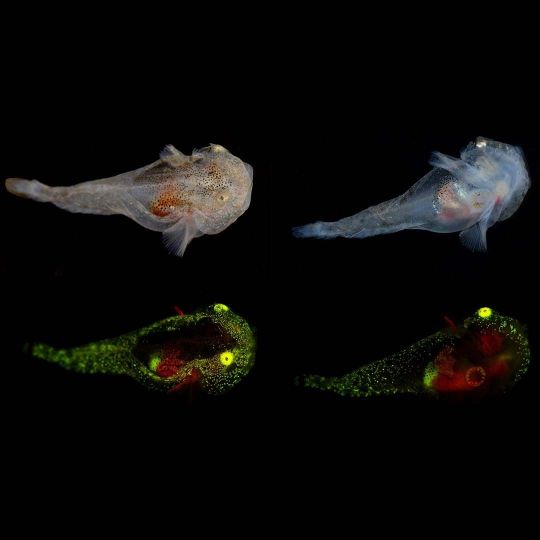
New research alert! In 2019, Museum researchers David Gruber and John Sparks were diving in the icy waters surrounding Greenland when they discovered that the variegated snailfish (Liparis gibbus) glows. This tiny snailfish remains the only polar fish reported to biofluoresce. Now, in a recently published study, they have uncovered something else surprising: this fish contains the highest expression of antifreeze proteins ever observed. It also sends up a red flag about how these highly specialized animals might fare in warming environmental conditions. Read more about their findings with the link in our bio! Photos: © John Sparks and David Gruber #museums #research #NewResearch #fish #biofluorescence #ichthyology #Greenland #ClimateChange #ClimateAndNature #MarineBiology #STEM #science #amnh https://www.instagram.com/p/ChVNOQavHUe/?igshid=NGJjMDIxMWI=
#museums#research#newresearch#fish#biofluorescence#ichthyology#greenland#climatechange#climateandnature#marinebiology#stem#science#amnh
595 notes
·
View notes
Photo
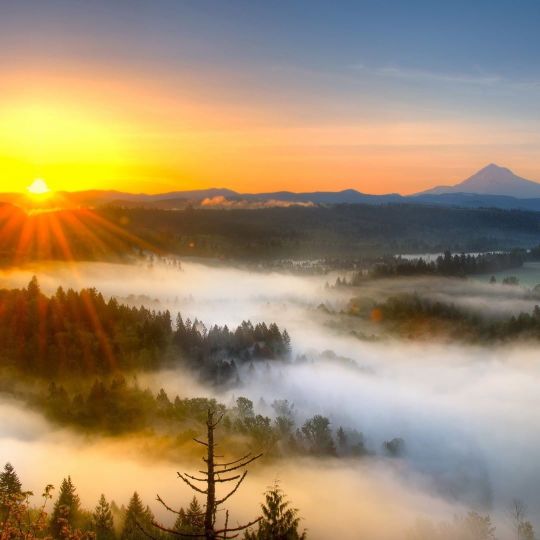
🌡️Climate varies naturally, but the natural factors that affect climate cannot account for the warming we see today. How can we tell? Many decades of data from instruments across the globe reveal an accelerated warming trend since the 1970s. It’s clear that human activity is warming the planet at an unusually rapid rate. Some of the main drivers include burning fossil fuels, deforestation, and cement production. The effects of rapid warming vary from region to region, but all of Earth’s systems are affected by #ClimateChange. 🌍Society can make choices now to better the Earth's future. Cutting CO2 emissions lessens the likelihood of some of the gravest potential consequences. Preparing infrastructure for sea-level rise and extreme heat now can help people and communities manage immediate impacts. And a worldwide shift to renewable energy sources like wind and solar power could limit the risk posed by climate change. ➡️It's #ClimateWeekNYC! To learn more about this important topic, visit the Museum's Gottesman Hall of Planet Earth or explore our climate change exhibits digitally. The exhibits and interactive stations are based on data from organizations including NASA and NOAA. Link in bio for more! Photo 1: Tony, CC BY 2.0, flickr Photo 2: D. Finnin/ © AMNH #ClimateAndNature #amnh #museums #nyc #uws #climate (at American Museum of Natural History) https://www.instagram.com/p/Ci0Jeo2LdYj/?igshid=NGJjMDIxMWI=
137 notes
·
View notes
Photo

🐻❄️Exhibit of the Day: The Polar Bear Diorama in the Museum’s Hall of Ocean Life! A close relative of the brown bear, the polar bear has evolved specialized features to thrive in the Arctic. For example, females produce highly-fatty milk that boosts their cubs’ growth, energy, and fat insulation, which helps the baby bears survive Arctic temperatures. 🌡️Because they’re so dependent on their arctic environment for hunting and survival, polar bears are especially vulnerable to melting sea ice driven by climate change. ➡️The Museum is open from Wednesday–Sunday, 10 am–5:30 pm. Plan your weekend trip! Photo: E. Louis/© AMNH #AnimalFacts #museums #diorama #amnh #PolarBear #ClimateChange #dyk #nature #NaturalHistory #RibbonSeal #ClimateAndNature #arctic #bears #SeaIce (at American Museum of Natural History) https://www.instagram.com/p/CfywQwwL6lk/?igshid=NGJjMDIxMWI=
#animalfacts#museums#diorama#amnh#polarbear#climatechange#dyk#nature#naturalhistory#ribbonseal#climateandnature#arctic#bears#seaice
102 notes
·
View notes
Photo

A giant sequoia tree (Sequoiadendron giganteum), a species found only in forests along the Sierra Nevada’s western slope, can grow over 300 feet (91.4 meters) tall and live as long as 3,000 years or more. But even this long-lived species is not invulnerable to climate change. Mature, more deeply-rooted sequoias stand a better chance of surviving more frequent extreme weather events, including floods, droughts, and wildfires, but seedlings and saplings can struggle to establish their roots. And over the past 10 years, scientists have observed that intense, multi-year droughts have contributed to the deaths of dozens of giant sequoia trees, suggesting that they are not as resilient to a changing climate as once thought. 📣This feature is part of our #ClimateAndNature series, where we highlight how climate change is affecting species on our planet. 🌱See this and other species in the Spectrum of Life in the Museum's Hall of Biodiversity. 🌏Join us tomorrow, April 22, for EarthFest! Learn more about conservation & climate change at this family-friendly online festival in honor of Earth Day. #linkinbio Photo: Laura Camp, CC BY-NC 2.0, flickr (at American Museum of Natural History) https://www.instagram.com/p/CN7juJPAOrP/?igshid=1j0o1y4sad3zg
271 notes
·
View notes
Photo
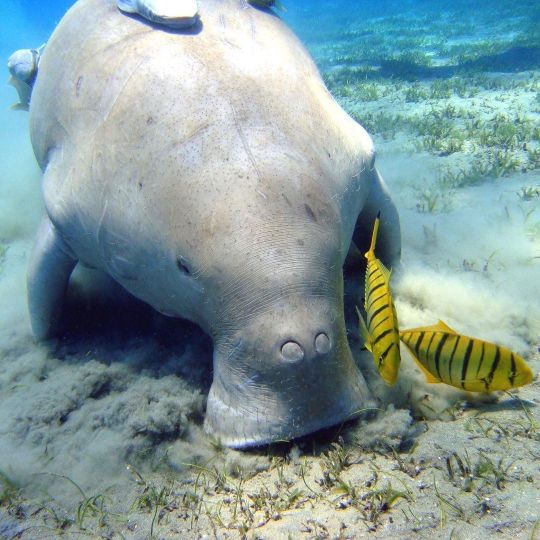
🌎 It isn’t news that the climate is changing. Change is already visible. Severe droughts, storms, and heat waves are becoming more common. But how does climate change affect the vast swaths of biodiversity on Earth? Leading up to Earth Day on April 22, we’ll be highlighting some of the species in the Museum’s Hall of Biodiversity and sharing stories about how the changing climate is disrupting their world, and ours. #ClimateAndNature 🌊 The dugong (Dugong dugon) is a large, gentle, slow-moving relative of manatees and, more distantly, of elephants. This herbivore lives in warm waters in the Indian and Pacific Oceans, where it spends much of its day grazing on sea grasses. In fact, a single dugong can eat as much as 88 pounds (40 kilograms) of seagrass a day! But as extreme weather events, like cyclones and floods, become more intense as a result of climate change, seagrass meadows can be damaged and destroyed—reducing an important food source for these vulnerable “sea cows.” Photo: Julien Willem, CC BY-SA 3.0, Wikimedia Commons (at American Museum of Natural History) https://www.instagram.com/p/CNlvC_MA8Bb/?igshid=zbdxmy16rjyh
257 notes
·
View notes
Photo
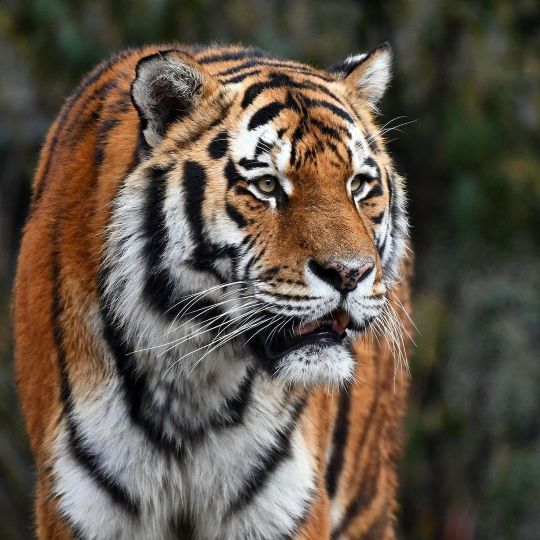
The Siberian tiger (Panthera tigris altaica), also known as the Amur tiger, is one of the largest big cats alive today. Males can weigh as much as 660 pounds (299 kilograms). The range of this Asian species includes parts of eastern Russia, northeastern China, and North Korea. But rising temperatures and intense wildfires are reshaping this big cat’s home and threatening its food supply, as pine forests that provide dense coverage and abundant prey give way to a less hospitable habitat. This feature is part of our #ClimateAndNature series, where we highlight how climate change is affecting species on our planet. 🌎 Photo: Joachim S. Müller, CC BY-NC-SA 2.0, flickr https://www.instagram.com/p/CNrFSIPgbQ_/?igshid=1jy1t2yjdoxn5
225 notes
·
View notes
Photo
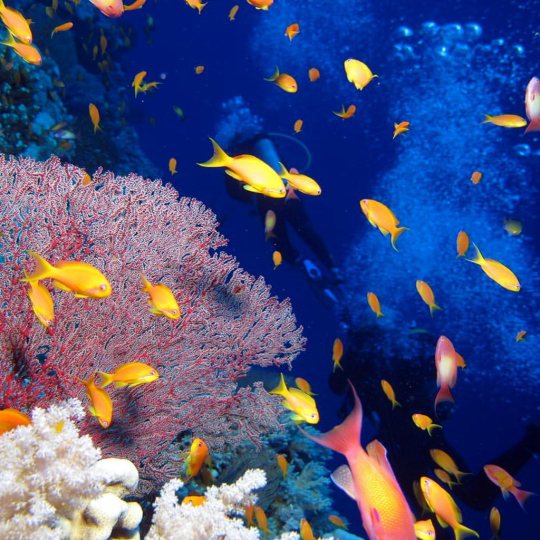
Bustling with a spectacular diversity of life, coral reefs are the rain forests of the oceans. Built by thousands of tiny organisms called polyps, which form the outside layer of the reef, corals create crucial habitats for other marine life. But warming oceans pose a threat: warmer waters stress the algae that lives in coral tissue and are leading to coral death, depriving other marine life of a healthy habitat and affecting the millions of people who depend on reefs for food and livelihoods.🐠 This feature is part of our #ClimateAndNature series, where we highlight how climate change is affecting species on our planet. Photo: Derek Keats, CC BY 2.0, flickr (at American Museum of Natural History) https://www.instagram.com/p/CNu4TYbAyWb/?igshid=uskbetdxfjvo
220 notes
·
View notes